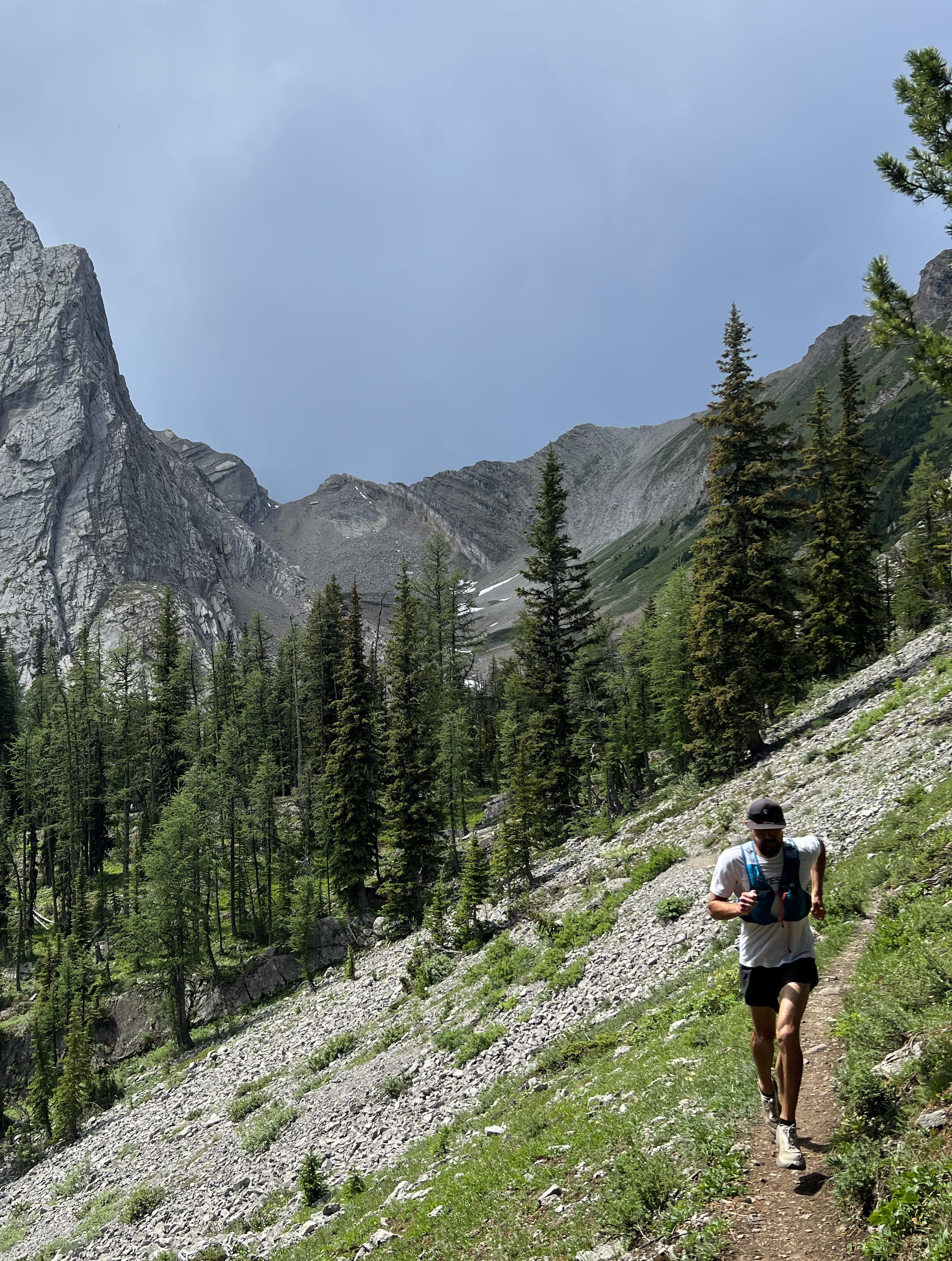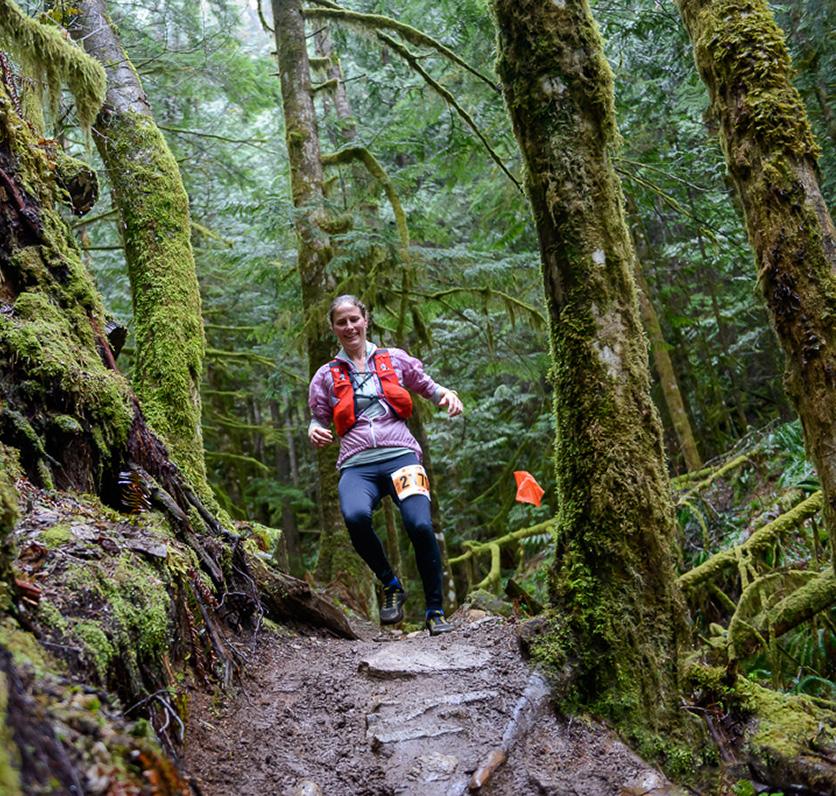
4 minute read
Trail Running 101
The trails are calling, and many runners are heeding the call
BY JACOB PUZEY JACOB PUZEY; 5 PEAKS ADVENTURES Father and husband who cobbles together a living as an ultrarunner, coach and race director, from Canmore, AB.
TEAMPEAKRUN PEAK RUN PERFORMANCE
On the descent, when you see an obstacle decide whether to go over it or around it.

The sport of trail running is growing. Some folks are transitioning from the roads to the trails while others are taking up trail running as their introduction to running in general. Whether it is a desire to spend more time in nature or simply the need to mix things up, trail running provides a new challenge and plenty of opportunities to learn and grow. As with any new activity, the level of enjoyment one experiences correlates with the amount of confidence and competence one possesses.
On one hand, it’s exciting to try something new and tackle a new challenge. On the other hand, gaining at least some confidence and competence in the new activity certainly makes it a bit less intimidating and more fulfilling and sustainable in the long run.
So how does one increase competence and confidence on the trails?
Learning to trail run is like learning a new language. It’s different, yet familiar. It’s challenging, yet intriguing. It’s intimidating yet rewarding. And just as the best way to learn a new language is to immerse yourself into a new culture, the best way to learn to run on trails is to run on trails.
If you are transitioning from the roads to the trails, I recommend some skill development drills or plyometrics to help prepare for the specificity of running on trails, but drills alone won’t be enough to feel confident or competent.
As you immerse yourself by regularly practicing the skill of running on trails and dedicating some time to practice the unique skills of running up and down hills on uneven terrain, your confidence and competence will increase. Adding strength training to your running routine can also help prepare your body and mind for the demands of trail running.
TIPS FOR THE TRAIL
• Start small (one easy trail run per week) and incrementally increase the time that you spend on the trails by either lengthening the run or adding another run on trails each week. • Do your easy/recovery runs on trails for a mental and physical break from the pavement. As with reading for pleasure, these low-stakes runs will help you gradually feel more confident without forcing it. Go as slow as you need to go and over time your confidence will simply increase. • Before adding hill repeats, simply do some of your easy/recovery and long runs on undulating terrain. Start by running these hills—up and down—at the same effort as you would the rest of the run. Over time you can begin increasing the intensity as you ascend and descend the hills. • Uphill running. Lean into the hills at your heels, keep a short stride length – this allows for better foot placement and your forefoot will propel you forward. If you need to walk or hike that is fine, often at the end of a race a runner’s pace is more efficient hiking rather than running. • Downhill running. As with the uphill, lean forward with your heels and strike in the forefoot/midfoot. Foot placement is important. When you see an obstacle like a rock decide whether to go over it or around it. Flaying out the arms is normal—nobody said trail running was elegant! • In any running plan, at least 80 per cent of it should be at a conversational pace at 5-10 RPE (Rate of Perceived
Exertion). If trails are easily accessible,
you could eventually work your way up to doing 80 per cent or more of your training on trails. If trails are not accessible, aim to do at least some of your runs on dirt roads or grass, even if it means doing loops around sport fields. • If you feel the need or desire to add some intensity to your training, start by doing cut-down runs, strides, fartlek, or hill repeats once a week on pavement. Once you feel comfortable and familiar enough with specific trails you can move these higher-intensity efforts to less technical trails or dirt roads. However, remember most trail running events aren’t short enough that you’ll need to be sprinting up or down hills or in the middle of a race on a flat section, so simply training at a conversational effort or a bit harder should suffice for most runners.
TERMINOLOGY
Plyometrics / Agility Drills – these are explosive movements that are meant to increase muscle power. Typical exercises include jumping jacks, lunges, box jumps and push-ups.
Easy runs – these aren’t slow slogs but run at an aerobic effort with a focus on feel and form.
Cut-down runs - these are an effective way to prime the legs and lungs for future hard efforts. You start comfortably and increase the effort incrementally throughout the run, therefore ‘cutting’ the pace down.
Strides – after a warm-up increase your pace for 50-100 metres, rest and then repeat.
Fartleks – the Swedish word for speed play. These are intervals done at 5-10 km pace during a run.










